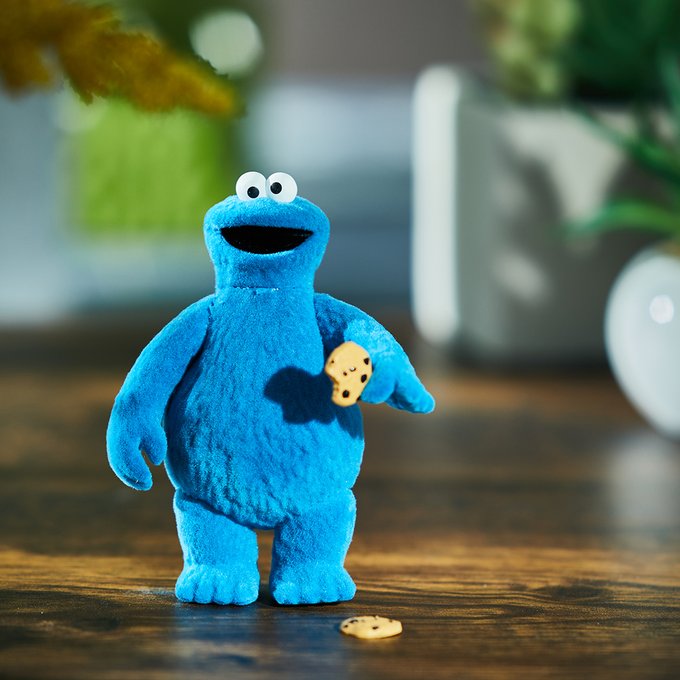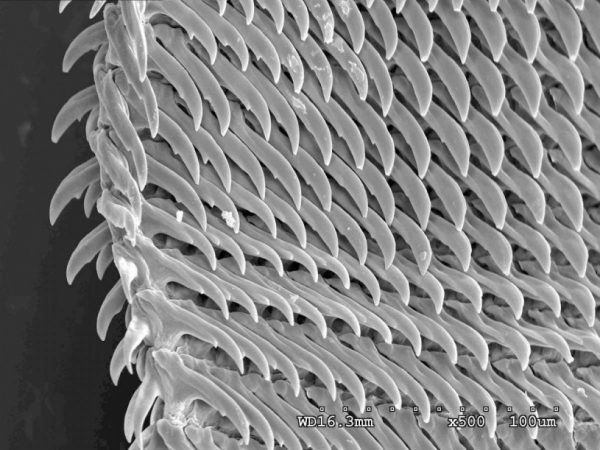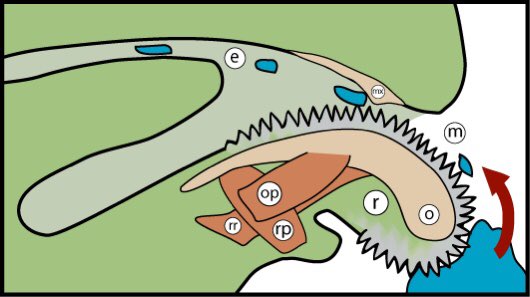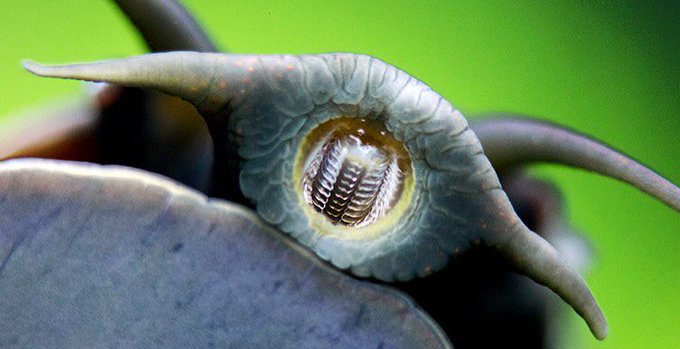Facts You'll Think Are Lies Until You Learn The Truth

July 21, 2025
•20 min read
In this article are some unbelievable facts you'll think are lies... until you learn the truth!
There are a lot of facts that everybody seems to know. But whether they’re from textbooks, the internet, or your teachers, we tend to believe a lot of them without questioning whether they’re actually true or not! Well, it turns out some of these well-known facts are actually lies passed down through the ages, others are just downright wrong, and the truth behind them is almost unbelievable! So, prepare to have your mind-blown into another time zone as we take a look at some facts that sound so crazy, you won’t believe they’re true!
Spaghetti Is The Plural Of Spaghetto
Imagine you have a super tasty bowl of spaghetti in front of you. You twirl your fork around and pick up one lone spaghetti noodle. It’s just that, right? A single strand of spaghetti? Well, actually, it has a name.
It turns out Spaghetti, an Italian word, is the plural noun for all those strings of pasta. Here’s a quick crash course in Italian; an I on the end of a noun usually indicates that it’s plural, where an O or A indicates its singular. This means a single strand of Spaghetti is actually called a Spaghetto. And the pasta madness doesn’t stop there: gnocco is the singular for gnocchi, fettucino is the singular for fettucini, and raviolo is the singular for ravioli. But this leaves me with just one question: what in god’s name is a Spaghetti-O then? We are not ready to know.Columbus Landed In The Bahamas, Not In The USA
Every year, Americans all over the great US of A celebrate Columbus Day. This is a holiday commemorating the Italian-born explorer, Christopher Columbus, landing in America and discovering the "New World" in the name of Europe back in 1492. There’s just one small, tiny, miniscule problem though. Christopher Columbus didn’t discover North America in 1492. In fact, he didn’t discover it at all!
Columbus had originally set sail to chart a western sea route to China, India, and the other fabled lands of Asia. But in October 1492, he actually landed in the Bahamas! Though it technically was The Americas, it wasn’t the America that most Americans like to celebrate.
We Celebrate Independence Day On The Wrong Date
Columbus Day isn’t the only National Holiday that the Americans have got wrong in their diaries. They celebrate July 4th is the all-important day that the nation officially became free from the rule of the British. The only problem is that date’s a little off. Not by a few days or even weeks, but a whole month!
You Can't See The Great Wall Of China From Space
School might have taught you that the Great Wall of China is the only manmade structure that can be seen from space. But this claim can leave kids confused for a few reasons. Number one, which great wall? The main span of the Great Wall, which was built to stop nomadic armies from invading China from the north, stretches almost 5,500 miles across the country. But it’s not the only wall.
Different walls were constructed all over the north from 5 BC all the way up to 17 AD, depending on where China was being attacked in each era. If all these sections were lined up end to end, the wall would actually be an unbelievable 13,170 miles long! But even then, that wouldn’t make the wall wider. So, with that in mind, how can it be seen from space, if at all? It turns out that, from a low-level orbit space, you can’t define the wall from the mountainous ridges and lines. NASA shared some images online pointing out some key sections of the Great Wall and you can kind of make it out but it’s not exactly the massive monument you probably imagined when your teacher told you you could see it from space!#CommonAstroQuestions Can you really see the Great Wall of China from space?
Wheels On Suitcases Were Invented After The Moon Landing
Still on the topic of space, we all know that it was one small step for man, and one giant leap for mankind when Neil Armstrong first step foot on the moon back in 1969. But while humanity was busy proving its space age prowess, people back on earth were still carrying their luggage around by handles like Neanderthals. It wasn’t until 3 years later, in 1972, that someone thought to put wheels on suitcases, and the very first patent for wheeled luggage was filed. Good to see humanity has its priorities in the right order!
As unbelievable as it sounds, there’s a good reason it was done this way around. The space race of the 1960s forced a lot of innovation in the space industry, while long-haul travel wasn’t as common back then! Still, it's pretty astonishing that man went to the moon before he thought to put tiny wheels on suitcases!Clouds Are As Heavy As 100 Elephants
As light and fluffy as they look floating up in the sky, clouds aren’t as weightless as they appear. Clouds are created when water vapor condenses into tiny droplets on particles, like dust or sea salt, floating in the air. All clouds are made up of a bundle of these droplets but are still light enough to defy gravity and stay in the air.
Researchers have calculated that the average cumulus cloud, the big fluffy white ones you see on a sunny day, are approximately 1 kilometer across. They’re also about as tall as they are wide, meaning they have a volume of around 1 billion cubic meters. They’ve also established that there’s roughly half grams of water droplets per cubic meter of cloud. That may not sound like much, but when it’s all added up, that means that clouds weigh a staggering 500,000 kilograms, or roughly 1.1 million pounds! For perspective, that’s about the same as 100 African elephants. Anyone else suddenly very aware of how many clouds are floating above them right now?Koreans Don't Have Body Odor
Anyone who’s ever been in a hot, crowded place, like a subway train, knows that people’s sweaty armpits can get really stinky really quickly. This is because skin-dwelling bacteria thrive in warm, moist areas like sweaty underarms. As they encounter your sweat, they break down a sweat-specific protein produced by a gene called ABCC11. It’s this protein, which is broken down into smelly products called thioalcohols by the bacteria, that causes the nauseating stench of body odor.

Dolphins Can Detect Bombs
You might know that the military regularly uses animals, like dogs, to help them detect and dispose of bombs thanks to their superior olfactory abilities. This is handy for operations on land, but what about operations out at sea? Well, it turns out that navies around the world have been working with specially trained sea dogs, and no, I don’t mean dogs wearing water wings!
Since the 1960’s, before underwater drones became a major military tool, dolphins were trained to carry radars, detect mines, and search for underwater enemies. Over in Soviet era Russia though, dolphins weren’t just tools, they were weapons, trained by experts to attack enemy divers and even enemy warships!
Bananas Don’t Grow on Trees
Looking at the massive leaves and branches that bananas grow on, which can reach a staggering 30 feet high, you might be forgiven for thinking that bananas grow on trees, right? Wrong. But if that’s not a tree, what else could it be? Maybe some kind of massive palm? Or perhaps it’s some sort of super huge bush?
Brace yourself, because the banana plant is actually a herb! That’s right, bananas grow on the largest herbaceous flowering plants in the world. Though their brown bases may make you think they have tree trunks, these are really pseudostems made up from as series of tightly packed leaves.Bananas Are Berries But Strawberries Aren't
But if the banana tree isn’t a tree, then what kind of fruit does that make a regular banana? You might think that all berries are easy to identify thanks to their names, like strawberries, raspberries, and blackberries. But here’s the kicker; the word berry is actually a botanical term, not an English one.
The Forbidden Fruit Was Not An Apple
One of the oldest and most well-known stories in the Bible revolves around 5 principal characters: Adam, Eve, God, Satan in the form of a talking snake, and an apple. The story goes that God creates Adam and Eve, lets them live in a very nice garden, and says they can eat anything except the apples hanging on the tree of knowledge. Spoiler alert, the Satan snake persuades Eve to eat the apple, and all of a sudden both of them are banished.
This famous tale has been perpetuated and passed down through art, illustrations, animations, and even films for centuries; but here’s the strange part: the fruit that Eve eats isn’t an apple. Despite all the stories you might have heard, there’s no mention in the original Book of Genesis about the fruit being an apple! Translated from the original Hebrew, the story only ever refers to the fruit of the tree. With that in mind, this forbidden fruit could have been anything that grows on a tree! Like a fig, a peach, a pear, a pomegranate, maybe even a durian? Wouldn’t want to be picking one of those while I was in my birthday suit!There Were No Three Wise Men
The tale of the Three Wise Men is a popular Christmas tale for Christians the world over. But even the most devout of them probably haven’t noticed that, at no point in the original Book of Matthew, were there ever specifically three wise men. It’s assumed there were three because, in the bible, they presented three famous gifts of gold, frankincense, and myrrh to celebrate the birth of Jesus.
Watermelons Looked Very Different Originally
We all know that watermelons are green on the outside and deliciously red on the inside. But what you might not know is that they didn’t always look this way. Around 1645, Italian artist Giovanni Stanchi painted a collection of fruits.
He used peaches, pears and even a few squash, and a freakishly fleshed fruit down in the corner, which is actually a watermelon. While it looks like an unusually unripe melon, the black seeds indicate this fruit was perfectly ripe at the time it was painted. So, what’s going on here? For hundreds of years, humans have selectively bred and cultivated watermelons to yield more delicious fruit and less of the bitter, seed storing pith! That means the watermelons you enjoy have been engineered to look and taste the way they do today. But those engineering efforts don’t stop with watermelons. The big juicy peaches many people enjoy actually started out as small, cherry like fruits with very little flesh. They were cultivated all the way back in 4000 BC by the Chinese, and apparently tasted more like a lentil than a fruit! Fast forward to today though, and after 6000 years of selective breeding, these fruits are now 64 times larger, 27% juicier, and 4% sweeter. That probably makes them 100% better!The Earth Isn't Perfectly Round
Thanks to the countless amount of proof provided to us by the means of photography and physics, we all know that the earth is round. But despite what you’ve been taught in school, it actually isn’t a perfect sphere. And before you start thinking I am a flat-earther; no, it isn’t a disk either.
The earth isn’t perfectly solid, which means that as it spins through space, the centrifugal force drags the mass within it out at the equator while the poles remain unaffected. This results in the earth bulging slightly at the equator, making it look ever so slightly squashed!Cleopatra Wasn't Egyptian
Cleopatra is, without a doubt, one of the most iconic Ancient Egyptian rulers of all time. She’s been portrayed on the silver screen and in works of art as a brilliant beauty who reigned supreme as the ultimate Queen of Egypt.
But for all her adoring disciples and goddess-like depictions, Cleopatra wasn’t Egyptian! She was actually the last of a Macedonian Greek dynasty called the Ptolemaic line, who ruled Egypt from the time of Alexander the Great's death in 323 BC. She wasn't black either, as Netflix wants you to believe.
Cookie Monster's Real Name
Learning the alphabet was pretty boring when you were a kid. A is for Apple, B is for Ball, but C, C is for Cookie, which most of us learned from a world-famous muppet called the Cookie Monster.
C is for cookie! 🍪 Shop our exclusive @super7 #CookieMonster figure at the link in our bio. boxlun.ch/4diS85e
Woolly Mammoths Were Still Around When Egyptians Built The Pyramids
Woolly mammoths are a now extinct species of pachyderm that flourished in the Ice Age of the Pleistocene epoch nearly 5 million years ago. Without knowing any better, a lot of people assume these elephant cousins were only alive during the super cold neanderthal period of human evolution. But that’s not strictly true!

Bubble Wrap Started As Wallpaper
There is nothing on earth more satisfying than popping bubble wrap. But as fun as the protective stuff is to pop, it wasn’t originally destined to be a prominent packaging material.
Back in 1957, inventors Alfred Fielding and Marc Chavannes were trying to create a new kind of textured wallpaper that was all the rage at the time. Initially, they put two pieces of plastic shower curtain through a heat-sealing machine, but they were left disappointed by the final flimsy sheet of film dotted with trapped air bubbles. They were under no illusion that no one would want to paste this on their walls, so they patented the process and began thinking of other uses for their invention. They improved its design and remarketed it as greenhouse insulation. Though it didn’t make waves in that market either! After that, they finally discovered Bubble Wrap’s true calling: in the protective packaging industry. These days, around 240,000 miles of bubble wrap are made and used every single year. That’s enough to loop around the earth 10 times over! Pretty incredible to think this idea was once destined to become the world’s ugliest wallpaper!Snails Have Thousands Of Microscopic Teeth
Anyone who looks at a garden snail can point out features like its shell and eyes, but where, exactly, is its mouth? It’s actually located on its slimy underside.
Los caracoles y otros moluscos tienen una lengua (odontóforo) cubierta de una cinta de dientes (rádula). Este órgano funciona como una sierra para raspar, desprender y tragar su alimento.
Mice Can Grow Human Body Parts
When organ transplants became increasingly successful back in the 1980’s, the demand for them sky-rocketed, and a huge problem suddenly hit the medical community. The need for organs was much greater than the number of organs available, leaving them with a terrifying shortage.
So, in 1997, surgeons and engineers began experimenting with whether or not human body parts could be grown, not in a lab, but on animals. The experiment was a success, as proven by the Vacanti mouse, a rodent with a human ear growing on its back!You Think This Is A Sonic Boom, But It Isn't
If you’ve ever been lucky enough to witness an aircraft going supersonic, you’ll know the only thing more impressive than the sound is the sight, and that’s the view.


























